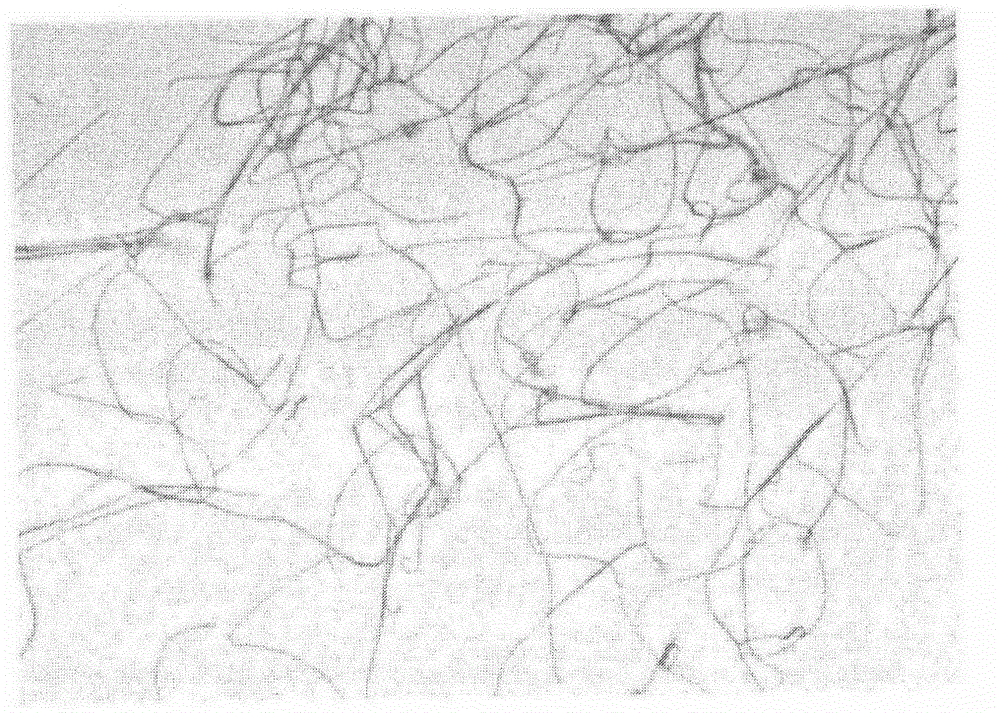Marine actinomycete with antiviral activity and application of marine actinomycete with antiviral activity
A technology of actinomycetes and bacterial strains, applied in the field of microorganisms, to achieve strong and obvious inhibitory effects
- Summary
- Abstract
- Description
- Claims
- Application Information
AI Technical Summary
Problems solved by technology
Method used
Image
Examples
Embodiment 1
[0024] Example 1: Isolation of strain HA12284CGMCCNo.11079
[0025] Sediment samples were collected in Dongzhaigang Mangrove Reserve, Hainan Province, and dried in a fume hood for 5-7 days. Take 5g of the air-dried soil sample, put it into a sterile Erlenmeyer flask, add 45mL of sterilized seawater, and shake it in a constant temperature shaker at 30°C and 180r / min for 1h. Using the plate dilution coating method, draw 1mL of the stock solution, dilute it 10 times with sterile seawater, select an appropriate gradient to draw 100μL, spread it on the actinomycetes isolation medium, and culture it statically in a constant temperature incubator at 28°C. Colonies with different shapes and colors were picked in due course for streaking and purification. For the purified actinomycetes, according to the morphological characteristics of the colonies, the same strains were excluded, transferred to a slant for storage at 4°C, numbered, and reserved for strain screening.
Embodiment 2
[0026] Example 2: Cultivation of bacterial strain HA12284CGMCCNo.11079
[0027] (1) Incline culture: culture for 6 days. Medium: soluble starch 10g, potassium nitrate 1g, dipotassium hydrogen phosphate 0.5g, magnesium sulfate 0.5g, ferrous sulfate 0.01g, prepared with old sea water, pH 7.2.
[0028] (2) Seed culture: Pick an activated single colony from the slope and insert it into the seed medium, and cultivate it at 28° C. and 180 r / min for 48 hours. Culture medium: 1% glucose, 1% soybean powder, 1% yeast extract, 0.5% soluble starch, 0.025% dipotassium hydrogen phosphate, prepared from natural aged seawater (after standing fresh seawater for a week), pH7.2.
[0029] (3) Fermentation culture: 8% inoculum size was inserted into the seed culture solution, and cultured in shake flasks at 28° C. and 180 r / min for 6 days. Medium: 0.5% glucose, 1.5% soluble starch, 1% soybean powder, 0.5% yeast extract, 0.025% dipotassium hydrogen phosphate, prepared with 75% natural aged seawat...
Embodiment 3
[0030] Example 3: Anti-H1N1 virus activity detection of bacterial strain HA12284CGMCCNo.11079
[0031] Carry out fermentation culture according to the method of embodiment 2, collect the fermentation product of 6 days of fermentation, 10000r / min centrifugation 10min, take supernatant, filter with 0.22μm sterile filter membrane again, set aside.
[0032] The anti-H1N1 virus activity of the fermentation liquid was detected by the CPE+MTT combination method: culture MDCK canine kidney cells, and after the cells grew into a single layer, inoculate 50 μL of the H1N1 virus solution at 37°C, 5% CO 2 Incubate for 2 hours, discard the supernatant, add 50 μL of 20-fold diluted fermentation broth, incubate at 37°C, 5% CO2, and observe the test cytopathic effect (CPE) under an inverted microscope. The recording method of CPE is as follows: no CPE is "-"; 25% of cells with lesion is "+"; 25%-50% of cells is lesioned as "++"; 50%-75% of cells is lesioned as "+++"; 75% to 100% of the cytopa...
PUM
 Login to View More
Login to View More Abstract
Description
Claims
Application Information
 Login to View More
Login to View More - R&D Engineer
- R&D Manager
- IP Professional
- Industry Leading Data Capabilities
- Powerful AI technology
- Patent DNA Extraction
Browse by: Latest US Patents, China's latest patents, Technical Efficacy Thesaurus, Application Domain, Technology Topic, Popular Technical Reports.
© 2024 PatSnap. All rights reserved.Legal|Privacy policy|Modern Slavery Act Transparency Statement|Sitemap|About US| Contact US: help@patsnap.com










